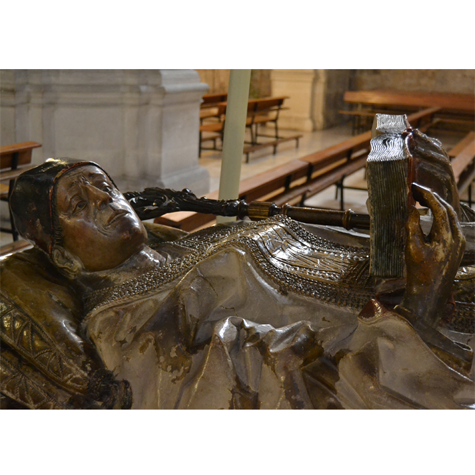Catalogue
THE HOLY CROSS ALTARPIECE
SURROUNDINGS
The altarpiece is set into a wall surrounded by a stone frame flanked by pinnacles and crowned with a Calvary carved in wood. This arrangement, truly exceptional in Flemish altarpiece production, could have been inspired by a precedent in the same town of Burgos. Because of this distribution, the altarpiece was conceived without wings, something that set it apart from Nordic tradition and gave it its very own personality.
The altarpiece comprises a predella, clearly-defined by a protective frieze, and a main body divided into three main sections on two levels. The centre section is reserved for a group of figures making up the Road to Calvary scene. This section, in fact, also gives its name to the altarpiece. The group limits its narrative to the strictly essential. The side sections, on the other hand, are reserved for free-standing figures and effigies of the commissioners of the altarpiece whereas those of their patron saints are located on the predella. This is yet another singular feature that sets this particular altarpiece apart from other carved altarpieces manufactured in Brabant.

